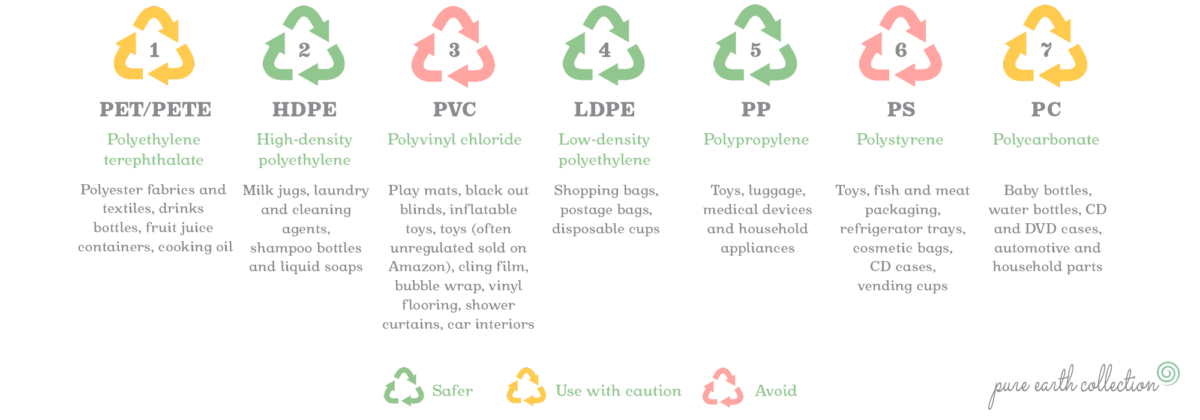PVC is considered to be one of the most harmful types of plastic for both human and environmental health. PVC is made soft and pliable using a group of chemicals called phthalates. These chemicals are an endocrine disruptor, they can cause developmental issues and are linked to liver, kidney and lung damage, reproductive issues and cancer. They are actually such a terrifying group of chemicals that the UK government enforced an overnight ban on them in children’s toys back in 1999, after research was published by the European Union of their dangers.

Government regulations on phthalates in children’s products
Although there are now some regulations limiting their use in certain children’s products, these chemicals still form a huge part of our daily lives as they are used in multiple household items such as inflatable toys, camp beds, skincare, artificial fragrances, soap, vinyl flooring and much more. Plus, products sold on Amazon don’t have to meet UK or EU regulations, and random tests have found worrying levels of phthalates in some toys sold on these marketplaces. These chemicals make their way into the human body through skin contact and our lungs as they are released into the air in our homes. When phthalates are released into the air, they cling to dust, which babies and children are far more exposed to than adults.
How about ‘non-toxic PVC’?
Phthalates are only part of the story – PVC is made up of a number of other chemicals which are known to be harmful to human health. Some manufactures have started to make ‘phthalate-free PVC’ claiming it is non-toxic, but the reality is, they have just swapped out the phthalates for other less well known chemicals which, for now, sneak below the radar of testing requirements and regulations.
What children’s products contain PVC?
Some children’s products which are often made with PVC include: PVC foam play mats, blow up mattresses, camp beds and inflatable toys, paddling pools and armbands. It’s about finding practical ways to minimise our exposure, rather than having an unrealistic goal to eliminate these altogether. Take armbands as an example – the immediate safety risk for young children around a pool is drowning, so it’s not practical to avoid armbands altogether, but you can stop your child chewing or biting on their armbands, or using them as toys while not in the pool.
Regardless of the loopholes in the current regulations, Pure Earth Collection do not consider PVC to be safe for use in children’s products, and we’re passionate about creating safer alternatives.
To replace blow up PVC camp beds, Pure Earth Collection created our toddler travel beds using a 100% natural mattress with organic cotton covers. They’re suitable for toddlers through to teens and even adults, as they’re almost as long as a standard single bed, and they come in a handy travel bad for easy transportation.
Traditional sticky blackout blinds are made using PVC fabric – these come with a warning not to leave up in direct sunlight because, when heated by the sun, they release even more harmful chemicals into the air than usual (have you ever left yours up in a sunny window and smelt that burning tar smell?). Our multi-award winning portable blackout blinds are made using 100% organic fabric with safe dyes, so the won’t release harmful chemicals into the air.
Our natural and non-toxic play mats are made from a spongy layer of natural rubber foam with sustainably harvested cork on top. They’re free from PVC, EVA and polyurethane and they’re wipe clean, roll up for easy storage and come in neutral designs to suit any home.
Reduce PVC toxicity in your home
To minimise exposure to these toxins at a household level try to encourage the whole family to change to organic and natural skincare, fragrances and soap where possible and practical, avoid soft plastics such as PVC and open windows to let in fresh air regularly.
